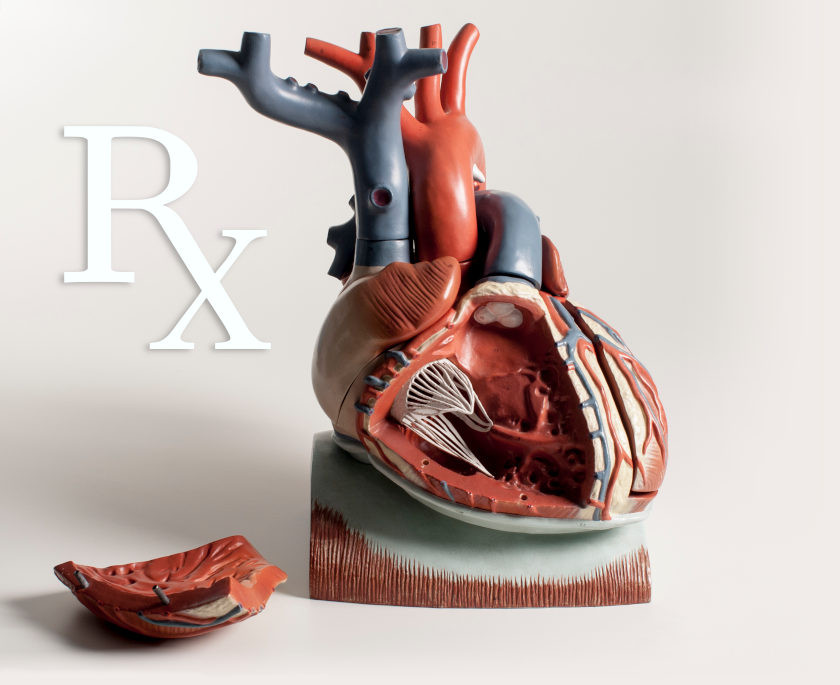Angiotensin Receptor Blockers (ARBs)
General Pharmacology
These drugs have very similar effects to angiotensin converting enzyme (ACE) inhibitors and are used for the same indications (hypertension, heart failure, post-myocardial infarction). Their mechanism of action, however, differs from ACE inhibitors, which inhibit the formation of angiotensin II. ARBs are receptor antagonists that block type 1 angiotensin II (AT1) receptors on blood vessels and other tissues, such as the heart. These receptors are coupled to the Gq-protein and IP3 signal transduction pathway that stimulates vascular smooth muscle contraction. Because ARBs do not inhibit ACE, they do not cause an increase in bradykinin, which contributes to the vasodilation produced by ACE inhibitors and also some side effects of ACE inhibitors (cough and angioedema).
Similar to ACE inhibitors, ARBs have the following actions:
- Dilate arteries and veins and thereby reduce arterial pressure and preload and afterload on the heart.
- Down regulate sympathetic adrenergic activity by blocking the effects of angiotensin II on sympathetic nerve release and reuptake of norepinephrine.
- Decrease blood volume by 1) promoting renal excretion of sodium and water (natriuretic and diuretic effects) by blocking the effects of angiotensin II in the kidney; 2) blocking angiotensin II stimulation of aldosterone secretion; 3) inhibiting antidiuretic hormone (vasopressin) release; and 4) by decreasing thirst-stimulating mechanisms.
- Inhibit cardiac and vascular remodeling associated with chronic hypertension, heart failure, and myocardial infarction.
Therapeutic Uses
ARBs are used in the treatment of hypertension and heart failure, similarly to ACE inhibitors (see ACE inhibitors for details). Valsartan is the only ARB approved for post-myocardial infarction.
Specific Drugs
ARBs include the following drugs:
- azilsartan
- candesartan
- eprosartan
- irbesartan
- losartan
- olmesartan
- telmisartan
- valsartan
Note that each of the ARBs named above ends with "sartan."
Side Effects and Contraindications
As a drug class, ARBs have a relatively low incidence of side effects and are well-tolerated. Because they do not increase bradykinin levels like ACE inhibitors, the incidence of dry cough and angioedema is lower than with ACE inhibitors. Using ARBs may lead to hyperkalemia, as occurs with ACE inhibitors, especially in patients taking a potassium-sparing diuretic. ARBs are contraindicated in pregnancy. Patients with bilateral renal artery stenosis may experience renal failure if ARBs are administered. The reason is that the elevated circulating and intrarenal angiotensin II in this condition constricts the efferent arteriole more than the afferent arteriole within the kidney, which helps to maintain glomerular capillary pressure and filtration. Removing this constriction by blocking angiotensin II receptors on the efferent arteriole can cause an abrupt fall in glomerular filtration rate. This is not usually a problem with unilateral renal artery stenosis because the unaffected kidney can maintain sufficient filtration after AT1 receptors are blocked; however, with bilateral renal artery stenosis, it is especially important to ensure that renal function is not compromised.
Revised 11/29/2023

 Cardiovascular Physiology Concepts, 3rd edition textbook, Published by Wolters Kluwer (2021)
Cardiovascular Physiology Concepts, 3rd edition textbook, Published by Wolters Kluwer (2021) Normal and Abnormal Blood Pressure, published by Richard E. Klabunde (2013)
Normal and Abnormal Blood Pressure, published by Richard E. Klabunde (2013)